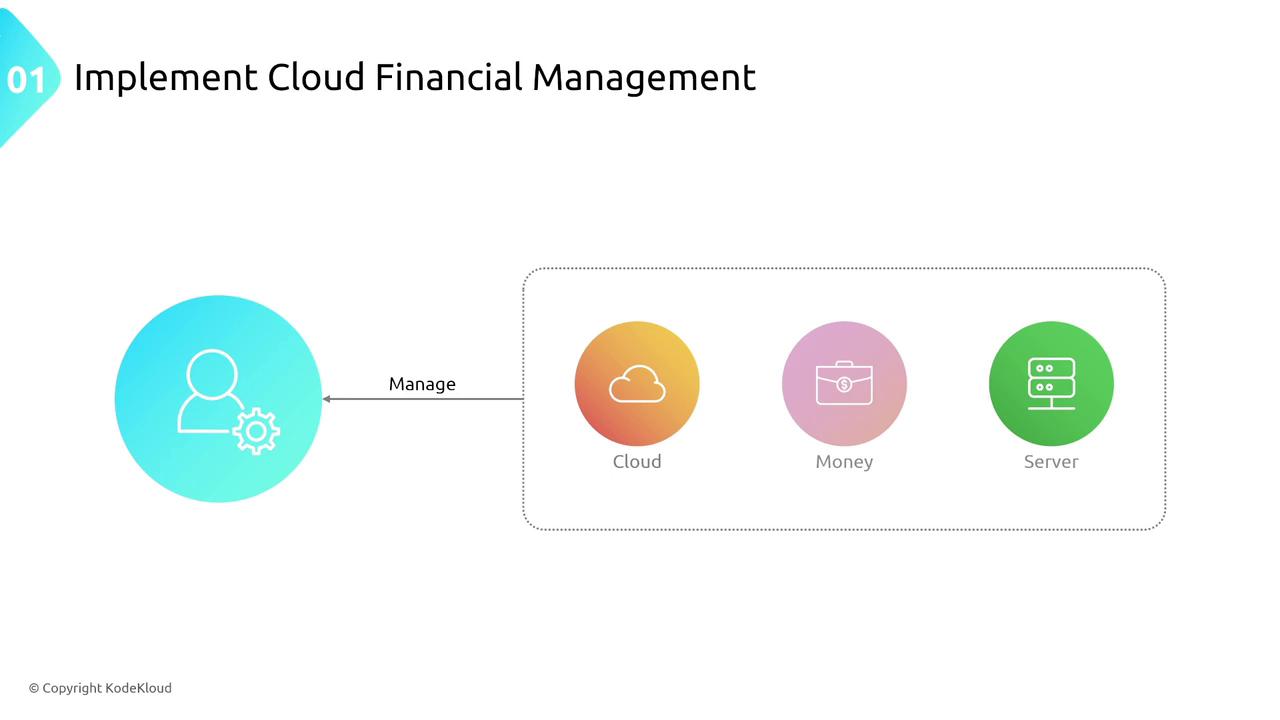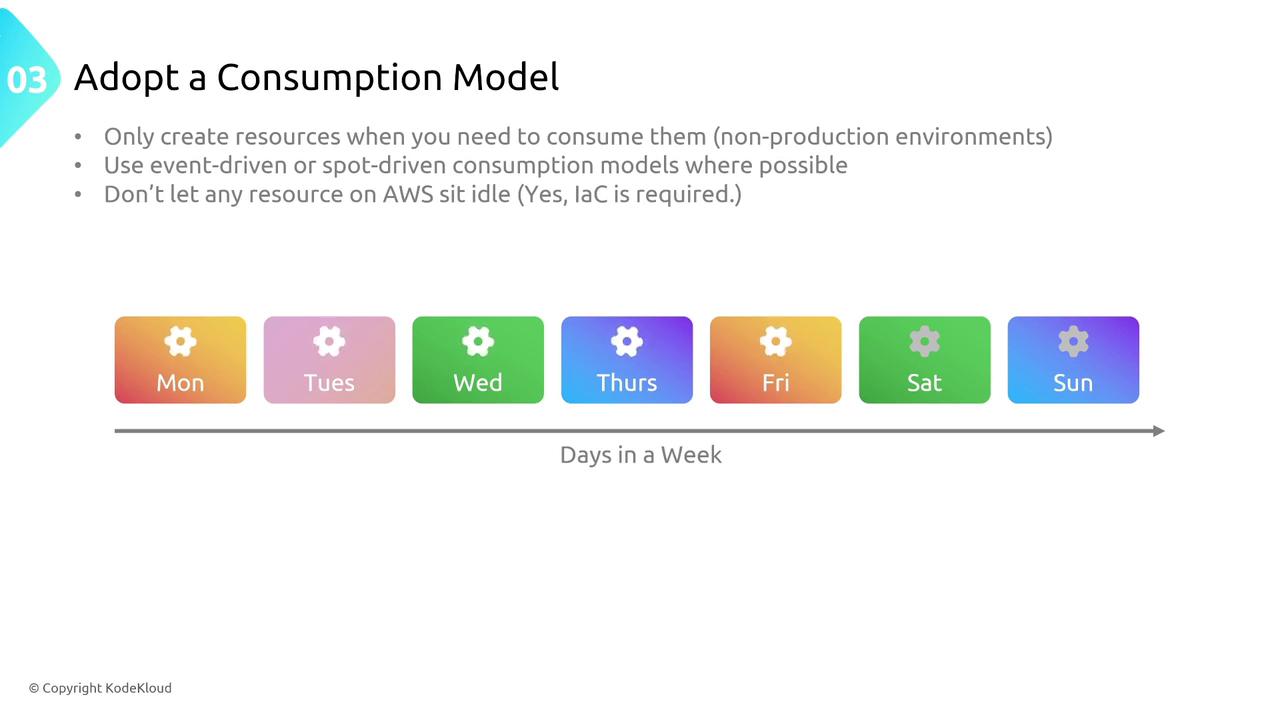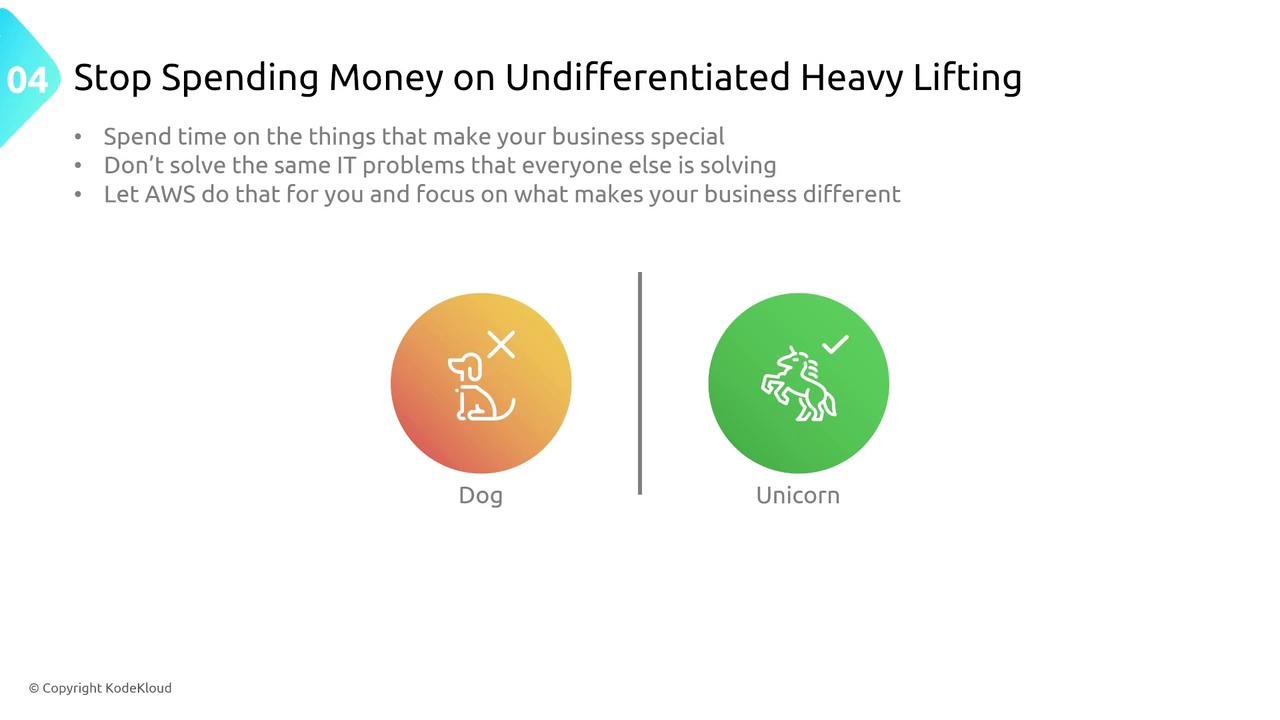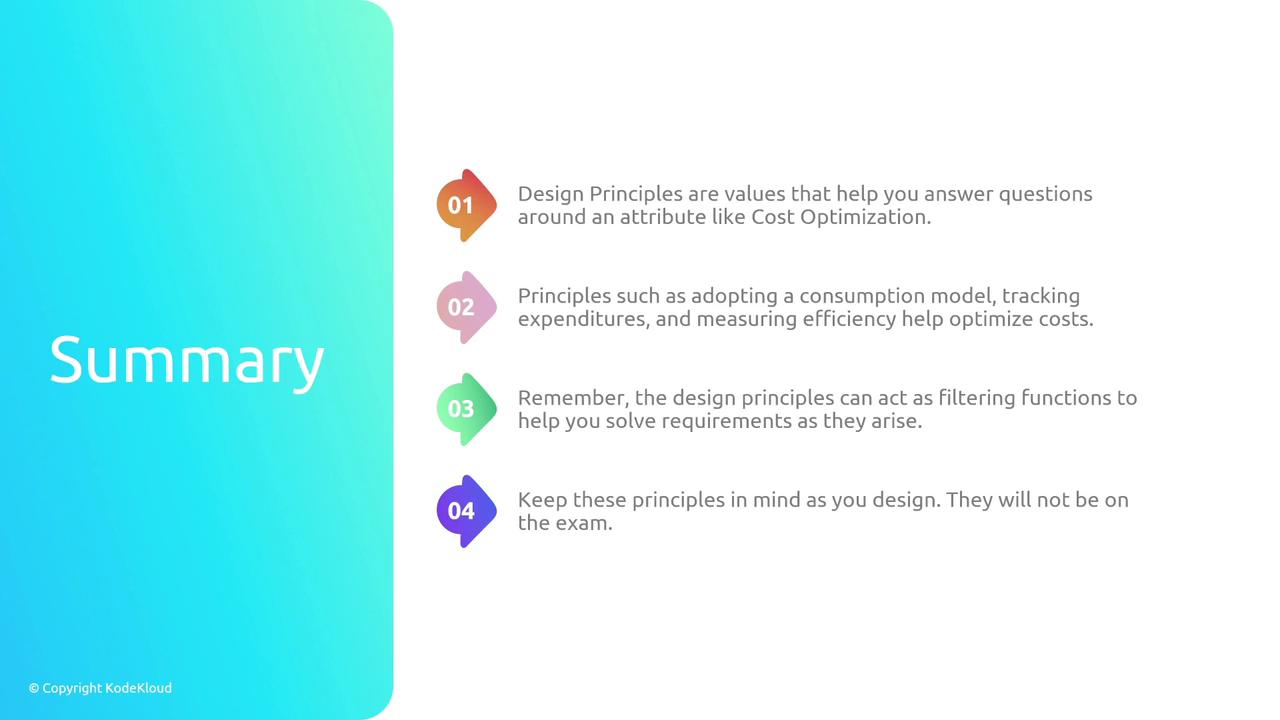AWS Solutions Architect Associate Certification
Designing for Cost Optimization
Design Principles for Costs
Welcome, Future Solutions Architects! In this article, presented by Michael Forrester, we explore strategic design principles that help optimize costs in cloud environments. By understanding these principles, you can ensure every dollar spent delivers maximum business value.
At its core, cost optimization is about generating significant business impact for each dollar invested. For example, if one dollar generates an impact worth $100, your design is highly effective. These principles help you evaluate whether a service or process contributes positively to cost efficiency, using techniques like cloud financial management.
1. Implement Cloud Financial Management
To achieve substantial business value in the cloud, investing in cloud financial management is essential. This practice involves dedicating time and resources to understand and manage cloud expenditures distinctly from traditional data center finances. Establish comprehensive reporting, set up automated alarms, and streamline processes to monitor spending effectively.

Ensure that every team is responsible for managing costs, not just the finance department. This collaborative approach can significantly enhance the efficiency and transparency of your financial operations.

Note
Remember: Empowering all teams with cost management responsibilities ensures better tracking and efficiency.
2. Measure Overall Efficiency
Understanding and measuring efficiency is crucial. Evaluate the balance between business demand, IT expenditures, and the value generated. Track key performance indicators such as capacity, utilization, and cost efficiency. For instance, spending $1 to generate $10 in revenue is ideal, but if $10 only produces $8, you need to optimize further.
Consider using dashboards and reports to monitor these metrics in real time, helping you make data-driven decisions about resource allocation.
3. Adopt a Consumption Model
A consumption-based model means paying only for the resources you actually use. Instead of keeping non-production environments running 24/7, schedule them based on real business needs—for example, operating them only during business hours can cut costs significantly.

Even if your resources store persistent data, you can pause the compute component to lower costs and resume it when needed. Incorporating event-driven architectures or spot consumption models with infrastructure as code can further optimize resource management.
Cost-Saving Tip
Utilize infrastructure as code to easily scale resources up or down based on real-time needs, ensuring you only pay for what you use.
4. Stop Spending on Undifferentiated Heavy Lifting
Offload routine IT tasks to your cloud provider to concentrate on aspects that add unique value to your business. AWS, for example, offers managed services for common operations, enabling your teams to focus on differentiating and core business functions.

This approach not only reduces operational overhead but also leverages the expertise of cloud service providers in handling routine tasks.
5. Analyze and Attribute Every Expenditure
Detailed billing data from AWS (and similar cloud providers) empowers you to analyze every cost component—network, storage, and compute. By tagging resources effectively, you can attribute costs to specific business initiatives. This granularity helps track ROI and ensures that each workload owner has the insights needed to optimize resource usage.
Insight
Tagging resources correctly is crucial. It helps in correlating costs with business outcomes, enabling more accurate and efficient decision-making.
Summary of Design Principles
| Principle | Key Focus | Benefit |
|---|---|---|
| Cloud Financial Management | Monitor and manage cloud spending | Enhances transparency and cost tracking |
| Measure Overall Efficiency | Evaluate KPIs like capacity, utilization, and cost | Informs better resource allocation decisions |
| Adopt a Consumption Model | Pay only for used resources | Significant cost savings by aligning with actual usage patterns |
| Stop Spending on Undifferentiated Heavy Lifting | Delegate routine tasks to the cloud provider | Increased focus on strategic, business-critical functions |
| Analyze and Attribute Every Expenditure | Detailed billing analysis and cost attribution | Data-driven decision-making for resource scaling |

By incorporating these design principles, you not only optimize costs but also enhance the overall business value of your IT initiatives. While these ideas provide a strong foundation, remember they are not directly tested on the AWS exam, although related exam questions might reference these concepts.
For further reading, explore these resources:
I'm Michael Forrester. Thank you for reading this article. Join the discussion on our forums, and I look forward to connecting with you in the next lesson.
Watch Video
Watch video content